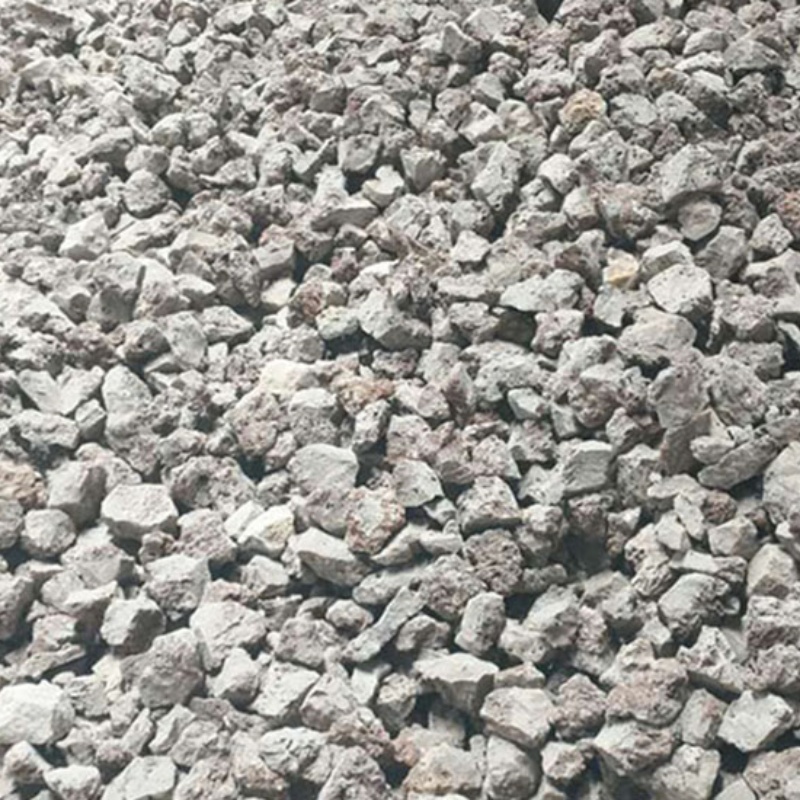
A method for manufacturing electromolten magnesium by cold mixing process
2024-01-17 15:10Conventional magnesia-carbon bricks made with synthetic tar bonds according to the cold mixing process harden and gain the necessary strength during tar damage, thus forming an isotropic glassy carbon. This carbon does not show thermoplasticity, which can timely eliminate a large amount of stress during lining baking or operation. The magnesia carbon brick produced with asphalt binder has high high temperature plasticity due to the anisotropic graphitized coke structure formed in the process of asphalt carbonization. 97 fused magnesia
Therefore, the cracking resistance of asphalt bonded brick is higher than that of asphalt bonded brick. However, one of the disadvantages of bituminous bonded bricks is that hot mixing is required during production, and a brick preheating device is required. In this paper, the method of making magnesia-carbon brick by cold mixing process is described. The resulting brick has a low elastic modulus, which allows it to play a role in relieving stress during operational use. The common coal tar pitch is harmful to environment protection because of the presence of benzovide in it. Special binders with low content of benzovath were selected which meet the environmental requirements.
1 Introduction
Thirty-five years ago, magnesium-carbon bricks were developed and are now widely used in masonry furnaces. Magnesia carbon bricks are also widely used in other kilns, such as double-chamber steelmaking furnaces and Rll type cycle vacuum treatment devices. Traditionally, such bricks have been manufactured using a cold mixing process using synthetic tar binders and a hot mixing process using asphalt binders. Both kinds of binders have their own advantages and disadvantages. The main advantage of magnesium-carbon bricks produced with tar binders is that it is possible to use the cold mixing process for production, which, unlike the use of asphalt binders, does not require heavy equipment and manual labor. On the other hand, the brick produced with asphalt binder has better thermoplasticity. In the process of use, because it can absorb the stress generated during operation, it has a high cracking resistance. The main content of this research work is to make use of the advantages of the two systems and develop the cold mixing technology.
Ordinary fused magnesia price
Fused magnesium
2 Experiment
2.1 Raw Materials
As raw materials, the purity of 97.5% of fused magnesia and 95% of the purity of FC scale graphite, standard coal tar pitch, due to the presence of polyaromatic hydrocarbons, such as benzopyri, it is harmful to the environment. The content of benzopyrum in coal tar pitch is between 10,000 and 15,000 mg·kg-1, while the international standard stipulates that the content of benzopyrum should be 50mg·kg-1 (see German standard TGRS551). In order to comply with this strict requirement, a special binder with a benzopyrine content of 300mg·kg-1 was selected. The viscosity data obtained from the supplier show that the dynamic viscosity of this binder is between soluble phenolic resin and linear phenolic resin, which is completely acceptable for production.
2.2 Preparation of the molding mixture and molding of the sample
Usually in order to make tar-bonded bricks, we use 2% dilute tar. In the course of the experiment, the dilute tar is gradually replaced by dilute asphalt, and the change of the formability and performance of the brick is observed. In order to carry out a full comparative study, five molding mixtures were manufactured.
The molding mixture is prepared in Eirih's inclined high-strength mixer and left for 0.5h. The bricks are formed at a pressure of 200mpa. The molded bricks are dried at 200 ° C for 20 hours and then cooled under natural conditions. The sample is cut according to the requirements of the following tests on the sample: open porosity, bulk density, compressive strength at room temperature and residual carbon rate in the brick.
2.3 Test of samples
Tests are carried out in our laboratory. Randomly select 3 bricks from each ingredient, and in order to reduce errors, calculate the average index.
The effects of dehydrating agents are well known. As such additive, sulfur powder was selected. Experiments were carried out with different amounts of sulfur. It was found that the strength was increased by 20% after adding sulfur, but the porosity and bulk density index of the material were not improved after carbonization. However, the two indexes of compressive strength after molding and carbonization were improved when 10% dehydrating agent and dilute asphalt were added. When the amount of sulfur was further increased, the strength was not improved.
3 Industrial Test
In order to carry out industrial tests, ingredient CZ was selected and made into bricks. The three ladles were lined with bricks made of the above ingredients. The service life of the lining is 109 times, 103 times and 105 times (average 109 times), and the service life of the traditional magnesia-carbon brick with tar bond is 103 times.
4 Closing remarks
Selecting the appropriate bonding agent can make the brick achieve higher performance. The used binder meets the requirements of environmental protection and safety (see standard TGRS551). Obviously, the improved lining life is good for the user. In terms of cost, the special asphalt binder used is similar to tar

